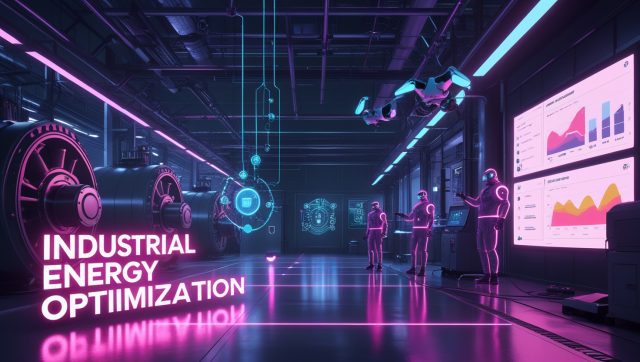In an industrial facility in Germany, engineers recently noticed something puzzling: identical sensor deployments in their Munich and Stuttgart locations were performing with noticeably different efficiency metrics. The hardware was the same, the software identical, yet the data transmission success rates varied by nearly 15%. The culprit wasn’t a manufacturing defect or installation error—it was an unoptimized configuration for regional frequency parameters that went unnoticed for months.
This scenario illustrates a fundamental truth for Industrial AI: intelligent algorithms are only as effective as their connectivity framework. As LoRaWAN continues its massive global expansion—with connections expected to exceed 3.5 billion by 2030 according to the LoRa Alliance® 2024 Annual Report—understanding and implementing the LoRaWAN regional parameters 2025 is no longer just a technical detail, but a strategic business imperative for global deployments.
How LoRaWAN Regional Parameters 2025 Are Shaping the Future of Industrial AI
The regulatory backbone of global IoT
LoRaWAN operates in unlicensed ISM (Industrial, Scientific, and Medical) bands, which vary by region due to differing regulatory standards . Unlike cellular networks with globally harmonized spectrum, each geographic region enforces different transmission rules for power, frequencies, and communication protocols.
LoRaWAN Regional Parameters are the official specifications maintained by the LoRa Alliance® that define how devices must operate in different parts of the world. They represent the critical bridge between LoRaWAN’s universal protocol and local regulatory compliance, ensuring devices can operate legally while maintaining interoperability across networks.
The industrial AI connection: From data to intelligence
For Industrial AI applications, these parameters directly impact system reliability and data quality. Consider that:
- AI models for predictive maintenance require consistent data streams from sensors
- Anomaly detection algorithms depend on stable communication intervals
- Network disruptions caused by non-compliance create data gaps that undermine AI training
Regional parameters establish the “rules of the road” that enable Industrial AI systems to collect reliable data across diverse geographic deployments—a fundamental requirement for building robust models that generalize across operational environments.
What’s New in 2025? Key Updates to LoRaWAN Regional Parameters
Enhanced network capacity with LR-FHSS
One of the most significant advancements in recent Regional Parameters is the full integration of LR-FHSS (Long Range – Frequency Hopping Spread Spectrum) support for additional region. This technology represents a fundamental shift in how LoRaWAN handles uplink communications, offering:
- Dramatically increased network capacity allowing more devices per gateway
- High interference resistance for industrial environments with significant RF noise
- Maintained low power consumption while improving scalability
“For applications requiring extreme barrier penetration – such as smart buildings and certain smart city applications like parking, LR-FHSS greatly improves scalability across a wide range of IoT use cases,” notes Donna Moore, CEO and Chairwoman of the LoRa Alliance .
Expanding global coverage and satellite integration
The 2025 parameters continue the trend of expanding LoRaWAN’s global footprint, with updates reflecting regulatory adoption in new markets. Additionally, the parameters now better accommodate direct satellite-to-device communication, a critical development for industrial assets in remote locations.
According to Satellite Markets and Research, the global market for satellite IoT services is expected to grow at a CAGR of just under 40%. The new regional parameters facilitate this expansion by standardizing how devices communicate with satellite networks, eliminating the need for region-specific firmware.
Why Industrial AI Systems Demand Current Regional Parameters
The predictive maintenance imperative
In industrial settings, AI-driven predictive maintenance systems monitor equipment vibrations, temperatures, and acoustic signatures to anticipate failures. These applications require:
- Consistent data delivery without gaps that could mask deterioration patterns
- Large payload capabilities for high-resolution sensor data
- Reliable downlink communication for model updates and parameter adjustments
The latest regional parameters address these needs through updated maximum payload sizes and improved downlink scheduling options that ensure critical AI model updates reach field devices reliably .
Smart city infrastructure and AI optimization
Urban environments represent perhaps the most challenging RF landscape for IoT deployments, with signal reflection, absorption, and interference from countless sources. Modern urban digital twins—AI-powered virtual city models—depend on thousands of sensors feeding consistent data.
The 2025 parameters enhance support for deep indoor penetration scenarios, crucial for water metering in basements, parking sensors in underground garages, and environmental monitoring in concrete structures. This capability strengthens LoRaWAN’s position for the rapidly growing global smart meter market, projected to grow at a 6% CAGR between 2018-2024, with water metering as the fastest-growing segment at 8% CAGR.
Implementation Best Practices: Navigating Regional Complexity for Industrial AI
Device configuration and certification
Implementing compliant Industrial AI solutions requires attention to several critical aspects:
- Frequency plan selection: Choosing the correct plan for each deployment region (e.g., EU868 for Europe, US915 for North America)
- Duty cycle adherence: Configuring devices to respect regional transmission limitations (e.g., 1% duty cycle in EU868)
- Power output optimization: Setting appropriate transmission power for both compliance and battery preservation
The firmware management challenge
Industrial AI deployments often span hundreds or thousands of devices across multiple regions. Maintaining region-specific firmware versions creates significant operational overhead. The latest regional parameters support more sophisticated remote configuration capabilities, allowing devices to adapt to regional requirements without firmware changes.
“At Actility, we’ve embedded this complexity into the core of ThingPark, so our customers can deploy their networks compliantly — without compromising on performance,” notes one of the co-inventors of LoRaWAN technology.
Future Outlook: Where Regional Parameters and Industrial AI Intersect
The satellite IoT revolution
The integration of satellite connectivity with terrestrial LoRaWAN networks represents one of the most promising frontiers for Industrial AI. With updated regional parameters facilitating direct device-to-satellite communication, industrial assets in agriculture, mining, and transportation can maintain connectivity even in remote locations—ensuring AI systems receive continuous data regardless of infrastructure.
Energy harvesting and battery-free operation
As Industrial AI expands to more deployment scenarios, power constraints remain a significant challenge. Recent developments in energy harvesting technologies paired with increasingly efficient regional parameters are paving the way for battery-free Industrial AI devices. These advancements could fundamentally change how and where industrial sensors are deployed, removing maintenance barriers that currently limit deployment options.
FAQ: LoRaWAN Regional Parameters and Industrial AI
How often do regional parameters update?
The LoRa Alliance typically updates Regional Parameters specifications every 12-18 months to reflect regulatory changes and technical advancements. The current version referenced in 2025 implementations is RP002-1.0.5.
Can one device operate across multiple regions?
While technically possible with multi-band hardware, most devices are certified for specific regional parameters due to regulatory requirements. Global deployments typically require different device variants or firmware configurations for each region.
How do regional parameters affect AI model performance?
Inconsistent communication patterns caused by non-compliant parameters create data gaps and timing irregularities that can significantly degrade AI model accuracy, particularly for time-series forecasting and anomaly detection applications.
What’s the penalty for non-compliance?
Regulatory penalties vary by country but can include substantial fines, network shutdowns, and confiscation of non-compliant equipment. Beyond legal consequences, non-compliant deployments typically experience poor performance due to interference and collision.
Fast Facts
The LoRaWAN regional parameters 2025 updates focus on enhancing network capacity through LR-FHSS technology, expanding global coverage—particularly for satellite IoT—and improving support for challenging industrial environments. These LoRaWAN regional parameters 2025 enhancements directly impact Industrial AI by ensuring reliable data collection across global deployments, enabling more accurate models and predictions for industrial applications.
Stay Ahead in Industrial IoT
Want monthly analysis on how connectivity standards impact Industrial AI effectiveness? Subscribe for strategic insights you won’t find elsewhere.
[Subscribe to Our Newsletter]



